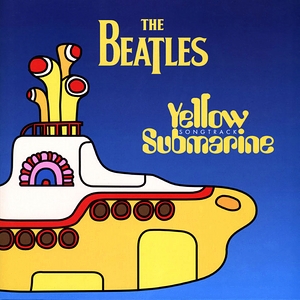Pop Art on the Silver Screen
How the Movement Transformed Cinema and Iconic Films That Embraced Its Aesthetics
Olivia Masters
7/29/20232 min read


The Pop Art movement of the 1950s and 1960s not only reshaped the art world but also left an indelible mark on the realm of cinema. With its vibrant colors, bold imagery, and celebration of popular culture, Pop Art's influence found its way onto the silver screen, transforming the way films were conceptualized and presented. In this article, we will explore how Pop Art influenced cinema and take a closer look at some iconic films that embraced the movement's aesthetics.
Pop Art's Visual Impact on Film:
Pop Art's striking visual language naturally resonated with filmmakers seeking to make a powerful impact on their audiences. The movement's bold colors, graphic patterns, and iconic symbols provided a fresh and innovative approach to storytelling. Directors and cinematographers experimented with Pop Art's dynamic style to create visually stunning and emotionally resonant films.
"Blow-Up" (1966) - Michelangelo Antonioni:
Michelangelo Antonioni's "Blow-Up" is often cited as a cinematic masterpiece that successfully incorporated Pop Art aesthetics. The film's protagonist, a fashion photographer in swinging 1960s London, captures images that reflect the Pop Art movement's fascination with consumer culture and the fleeting nature of fame. The film's visual style, bold use of colors, and depiction of countercultural life mirrored the spirit of Pop Art, elevating it to an iconic status.
"Yellow Submarine" (1968) - George Dunning:
The animated film "Yellow Submarine," featuring The Beatles, is a vivid celebration of Pop Art's playful and whimsical side. Directed by George Dunning, the film brought the band's music and personalities to life with a mesmerizing display of psychedelic visuals and Pop Art-inspired animation. The film's innovative use of graphics and bold designs perfectly captured the essence of the era's counterculture movement.
"A Clockwork Orange" (1971) - Stanley Kubrick:
Stanley Kubrick's "A Clockwork Orange" is a surreal dystopian masterpiece that embraced the visual language of Pop Art. The film's striking use of color, surreal set designs, and disturbingly stylized violence all bore the hallmarks of the movement's aesthetics. Kubrick's daring visual choices echoed Pop Art's confrontational nature and helped cement the film's status as a groundbreaking work of cinematic art.
"Fantastic Mr. Fox" (2009) - Wes Anderson:
In the realm of animated films, Wes Anderson's "Fantastic Mr. Fox" stands out as a brilliant example of how Pop Art aesthetics can be successfully incorporated into storytelling. The film's meticulous stop-motion animation, quirky character designs, and vivid color palettes pay homage to the movement's visual language, creating a charming and visually engaging cinematic experience.
The Pop Art movement's profound impact on cinema is evident in the rich tapestry of films that embraced its aesthetics. From live-action classics to animated wonders, filmmakers have drawn inspiration from Pop Art's dynamic visuals, its celebration of popular culture, and its unapologetically bold style. These films have not only entertained audiences but also become cultural touchstones, reminding us of the enduring influence and timeless appeal of Pop Art on the silver screen. As the legacy of Pop Art continues to thrive, we can look forward to more filmmakers being inspired by its artistic spirit, ensuring that the movement's influence on cinema will remain a vibrant and essential part of film history.
